By David Skinner
When Peter Jackson decided upon his native New Zealand to serve as middle earth for his rendering of the Hobbit and the Lord of the Rings, nationalistic nepotism served him less than the splendor of the rich and varied landscapes found in his home islands. The films depicted rugged terrain and lands carved from the mountains by the relentless influence of wind and water and there is still a sense of that primal constitution to the landscapes that now support modern viticulture in the “Shaky Isles”.
Marlborough
The South Island is home to the internationally renowned Marlborough wine region where Sauvignon Blanc has flourished as its backbone varietal. Beyond this singular success, the variety of micro-climates, topology and soil found within the boundaries of this northern-most part of the island makes this area of viticulture adaptable to making great wine from several other grapes.
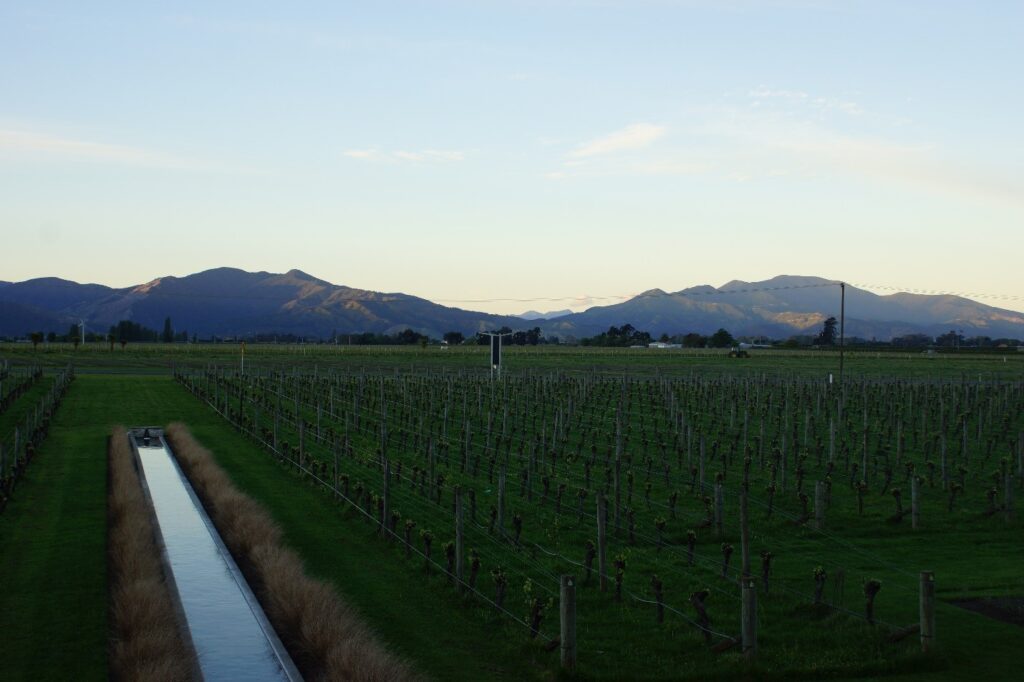
The land has been transformed over the centuries by the Wairau and Awatere Rivers and the soils deposited over centuries form a mosaic through the region where microclimate and soil diversity favor an expanding array of grape varieties. Moving southward from the stony, fast-draining land near the Wairau River, the hillsides tend to hold water more tightly in the clay and silt deposited there by receding river in millennia past. Continuing the journey south and east of these hills, the Awatere River lives up to its Maori moniker meaning “fast-flowing river” and it is here that alluvial, free-draining soils stress both the vine and the viticulturalist. Visually the difference between these two most important sub-regions is remarkable with the gentle rise and fall of the land in the north contrasted against the escarpments and rugged terrain to the south.
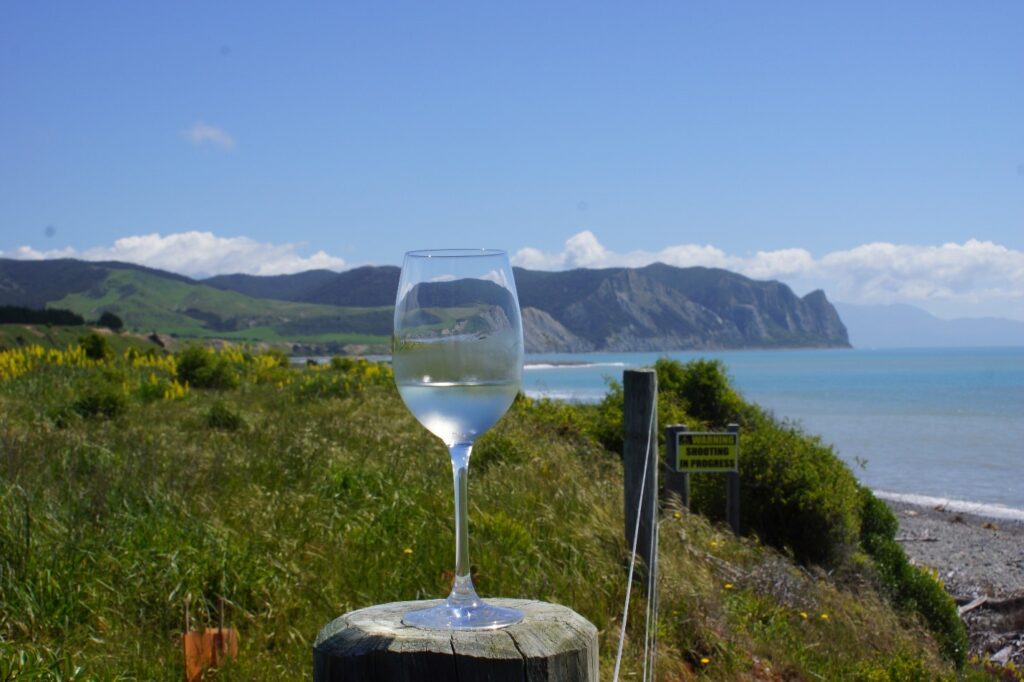
The South Island’s Antarctic neighbor can be inhospitable and without the protection of the Wither Hills that divide the Wairau valley from the Awatere sub-region and the impressive mountains further to the south, wine cultivation would suffer immensely. Fortunately, these natural windbreaks transform chilling winds into cool breezes that caress the vines and keep the region from getting too hot or too cold. Mother nature has surely blessed Marlborough with an air conditioning system that perfectly complements the intensely sunny days. With the vast terroir variations, winemakers are quickly discovering how to solve the puzzle of where to plant for the best results.
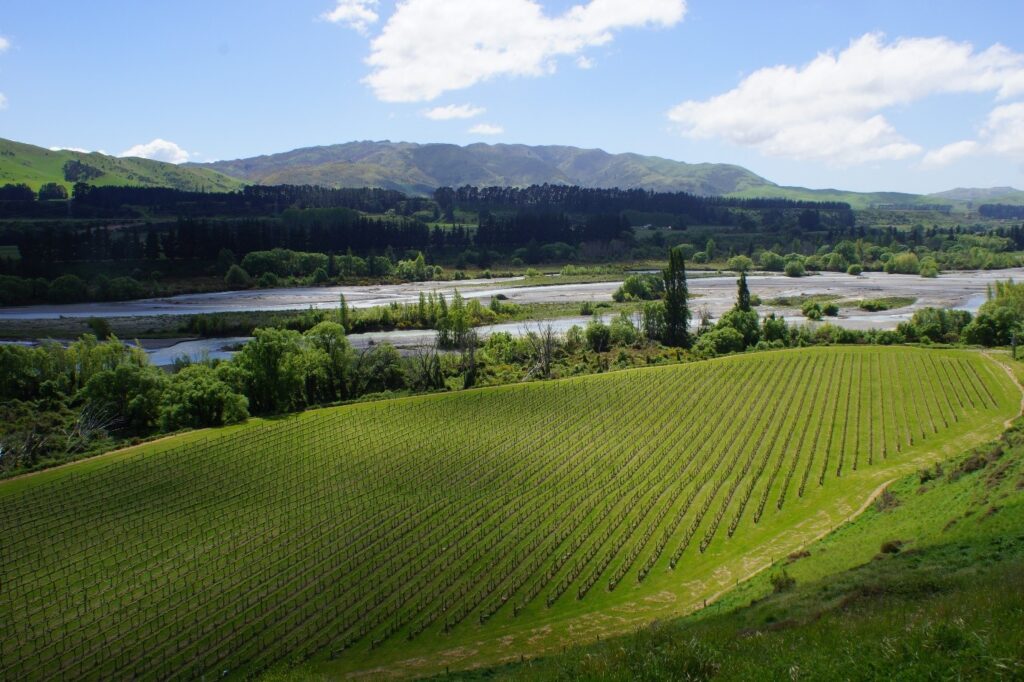
Villa Maria has long recognized the value of having such diversity and opportunity to cultivate for both grape type and style to please the palates of consumers and the imagination of the winemaker. From these building blocks the winemaker adds complexity through their chosen techniques to ensure that there is a style to meet a broad range of palate preferences.
The Wines
Two styles of Sauvignon Blanc are made here and they couldn’t be more distinct. From the Awatere valley where the conditions favor herbaceous and mineral-driven styles, to the more tropical fruit profile in the Wairau. Of course, there is a great opportunity to blend from the native characteristics of selected terroir to achieve several desired features from both.
Chardonnay occupies a significant place among white varietals but Riesling is gaining favour along with Pinot Gris.
For reds, Pinot Noir rules the region. Over time, viticulturalists have increased their Pinot production and quality by taking advantage of the microclimate and clay slopes surrounding the valley floors. Some excellent examples of Pinot plantings can be found along the Wither Hills.
Tasting Notes:
Villa Maria Cellar Selection Sauvignon Blanc 2017
Villa Maria Single Vineyard Taylors Pass Chardonnay 2015
Villa Maria Single Vineyard Seddon Pinot Gris 2016
Villa Maria Cellar Selection Dry Riesling 2015
Villa Maria Single Vineyard Taylors Pass Sauvignon Blanc 2016
Villa Maria Reserve Wairau Valley Sauvignon Blanc 2016
Villa Maria R&D Sauvignon Blanc “On the Skins” 2015
Villa Maria Single Vineyard Seddon Pass Pinot Noir 2014
Villa Maria Single Vineyard Taylors Pass Pinot Noir 2014
Hawkes Bay
Moving northward to the Hawkes Bay region, red wine aficionados will find plenty to please their palate. This and its neighbor, Gisborne, share some evolutionary heritage that makes this region perfect for longer ripening grapes like Cabernet Sauvignon, Syrah and Merlot. Pinot Noir gains an advantage for those looking for a riper, more fruit-driven version of the Pinots from the Central Otago in the southernmost reaches of the islands.
The most famous sub-region in Hawkes bay is the Gimblett Gravels area through which the Ngaruroro River wends its way to the sea leaving a legacy of unique namesake soils upon which some of the best red wines flourish. These stony gravels were once the riverbed but extensive flooding in 1867 shifted the flow of the river moving it northward as the waters receded leaving behind a mixture of stony loam soil upon which some of the best examples of New Zealand reds can be found.
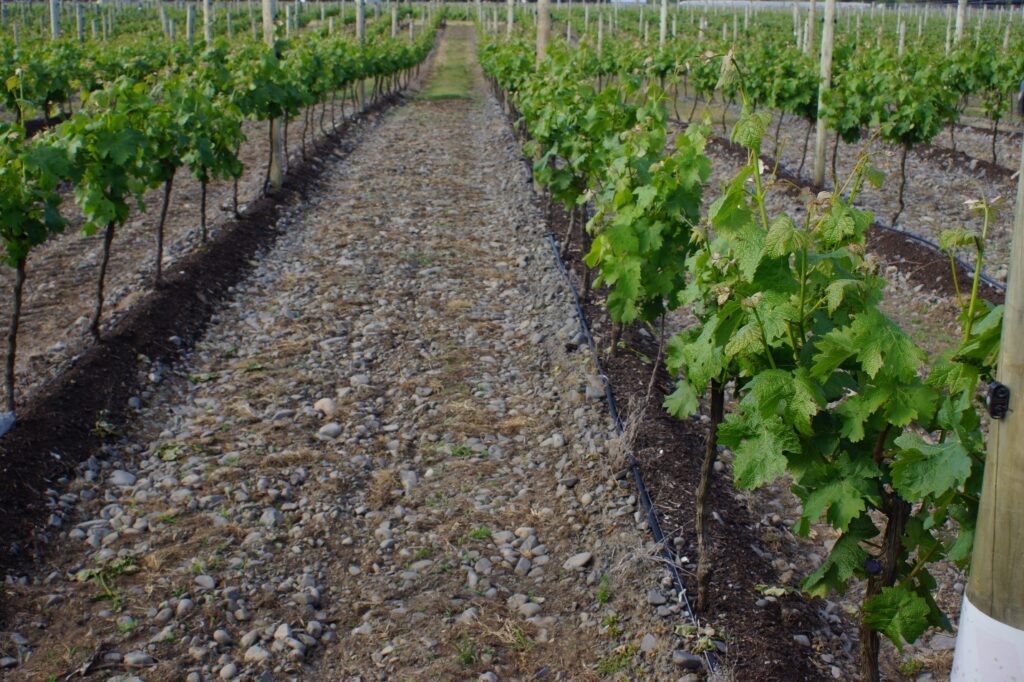
Perhaps it isn’t too coincidental that the terroir, reminiscent of the southern Rhone, is home to many of the same varietals from France. One of the area’s innovators, Dr. Alan Limmer played a part in establishing the Rhône style. A researcher with deep roots in soil science and viticulture, he rescued about 100 Syrah cuttings from an experimental block and gave them a place to flourish in the Gimblett Gravels sub-region. While the provenance of this clone is speculative, the “Limmer clone” proved to be spectacularly suited for New Zealand. Without the rescue efforts of the passionate doctor, Syrah in the islands may never have gained such prominence.
Slightly north of Napier, the Esk River Valley hugs the Hawkes Bay coastline and the area runs slightly perpendicular to the course of the Ngaruroro along hillsides facing the sea. It is here that one of the earliest wineries placed their hopes for great reds. Originally, there were a handful of pioneers in the region with Glenvale Winery being one of the leaders. The plot of land sitting adjacent to Heipipi, one of the earliest Maori settlements, fell to economic stress in the early 1980s. Owing to the foresight of Villa Maria’s owner, Sir George Fistonich, the winery has emerged as one of the best the valley has to offer. Now under the Esk Valley winery label, this facility stands in stark contrast to many modern winemaking facilities. It is built into the hillside and takes advantage of nature’s subterranean cooling system and uses those same slopes to allow the viticulturalist to manage crop yields, maturity and varietal selection.
Here efforts are focused on making great wines by being deeply in touch with both the soils and the winemaking process. That’s not simply an emotive description of dedication but a literal depiction of how wines are made at Esk Valley. The making of “The Terraces” exemplifies how nurturing what nature provides yields phenomenal wine.
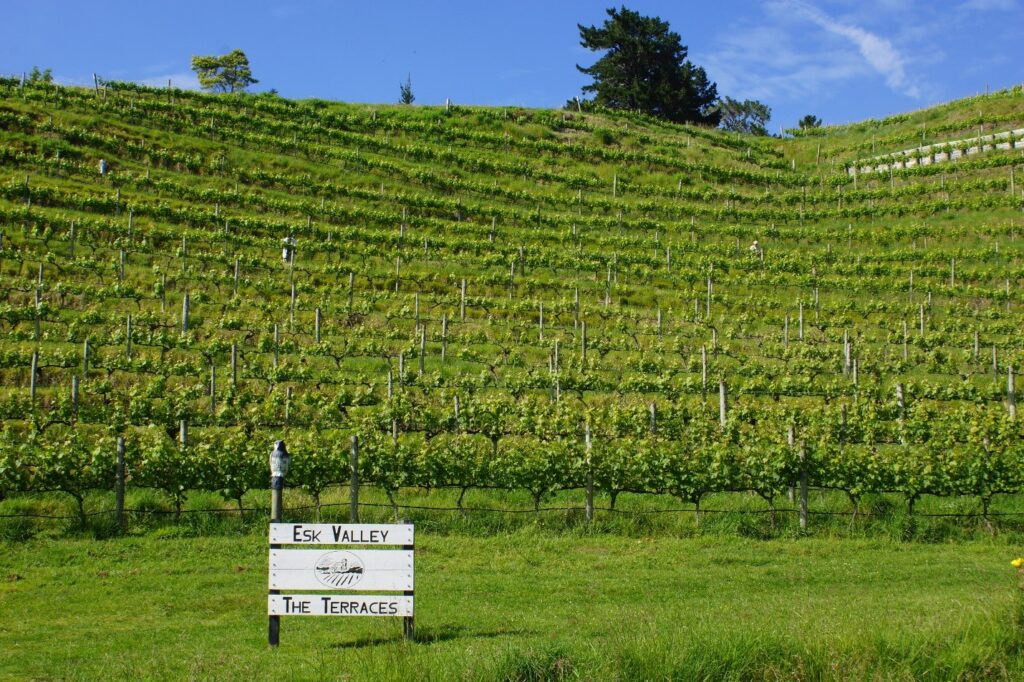
The hillside to the south of the property is steep and yields only to care by hand. On the slopes three different grapes are cultivated. About 40% of the vines are Malbec with another 40% Merlot and the final 30% comprised of Cabernet Franc. What makes this wine unique is that the whole vineyard is picked in a single day, destemmed and placed into a large concrete fermenter brought to the grapes, thus avoiding the perils of transport. Then the natural yeasts from the vines work their fermentation magic literally in the field during which the must is hand plunged four times daily. The wine is aged on skins for 24 days and then barrel aged for 17 months. The real trick to this organic approach is to manage the canopy to ensure perfect ripeness on the day of harvest. Not such an easy task since different grapes mature at different rates and the winemaker constantly keeps a close eye on how much pruning is needed to provide the right sunlight conditions to achieve the perfect ripening conditions for this process. In the end, it isn’t surprising that only 13 of the last 26 years has seen the perfect conditions needed to produce “The Terraces”. Only around 300 cases are ever made from a vintage. It is a black-garnet nectar with dark fruit, vanilla, violets, chocolate and baking spices leaping from the glass. A lingering finish with great balance and age-worthy tannins make this one of the regions premier wines.
Tasting Notes
Villa Maria Estate Keltern Chardonnay 2016
Villa Maria Reserve Chardonnay Hawkes Bay 2015
Villa Maria Estate Cellar Selection Albarino 2016
Villa Maria Private Bin Pinot Gris 2017
Villa Maria Reserve Gimblett Gravels Cabernet Sauvignon Merlot 2015
Villa Maria Single Vineyard Braided Gravels Organic Merlot 2013
Villa Maria Reserve Gimblett Gravels Syrah 2014
Villa Maria Private Bin Organic Merlot 2015
A pilgrimage to NZ should be on the bucket list of all whose passion runs to the grape. The Hawkes Bay and Marlborough regions are foundational but there is plenty of great food and lodging to please a hedonistic streak in many of us.
Places to Visit
The Hawkes Bay area there are great cellar doors, many with fine dining and some with vineyard cottages to call home while sipping and sampling the regions delicacies. Some of the best include Elephant Hill Winery, Mission Estate, Vidal Winery and Craggy Range.
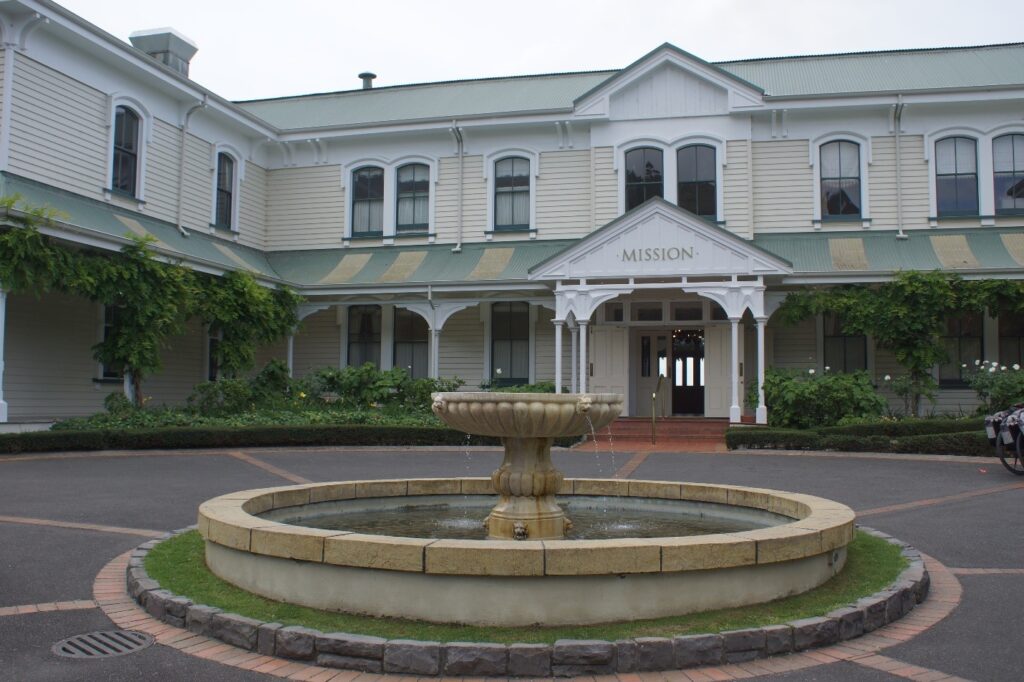
Craggy Range is notable for its spectacular vineyard cottages and gourmet dining at their onsite restaurant, Terroir.
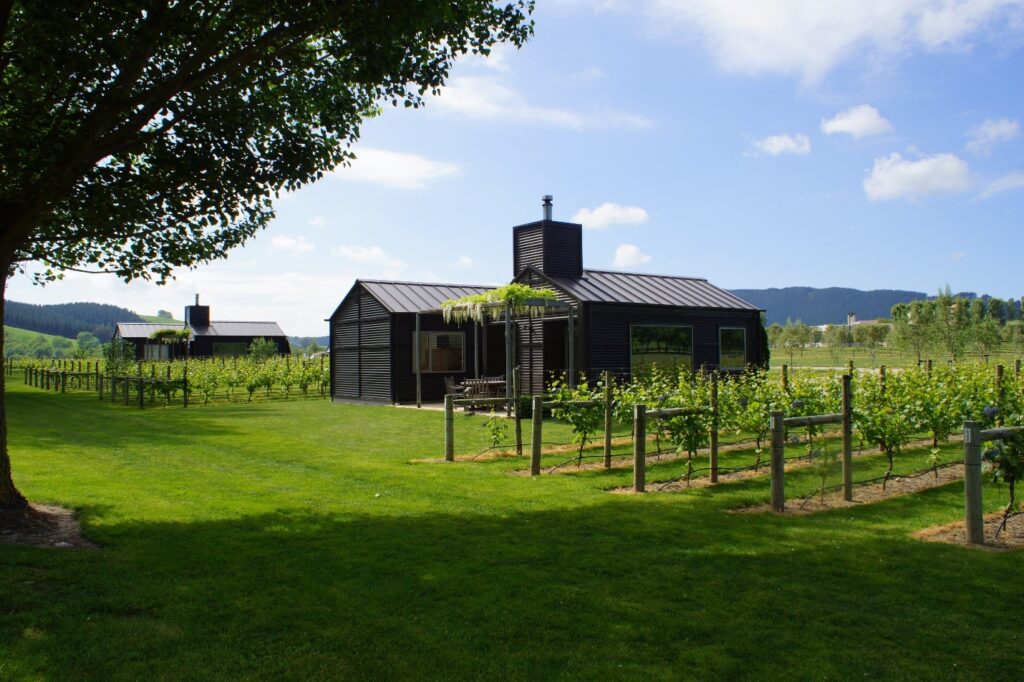
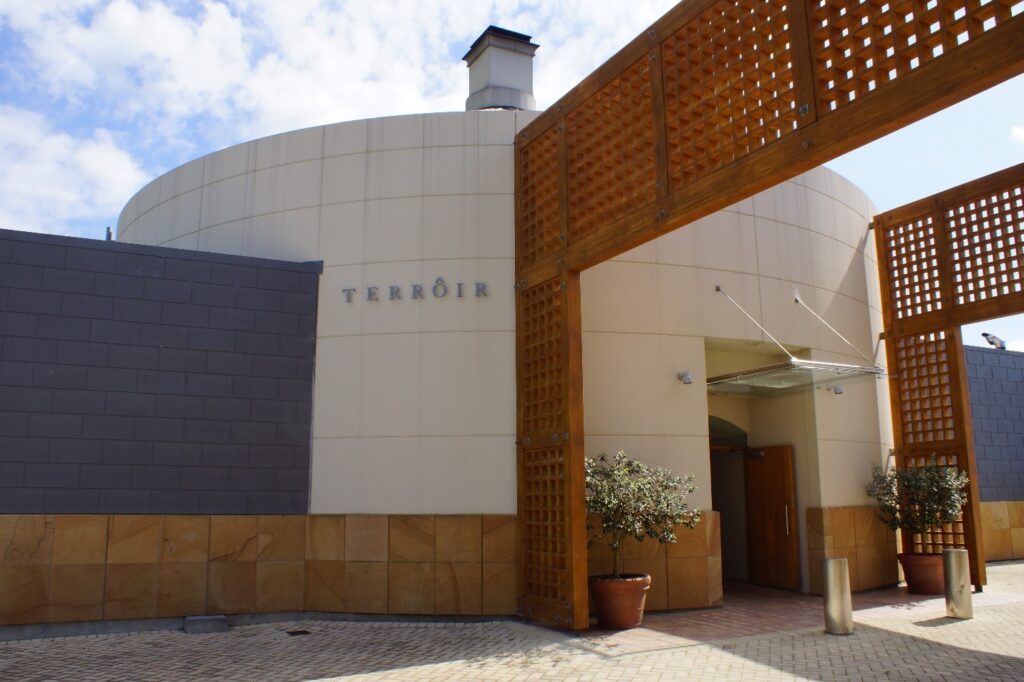
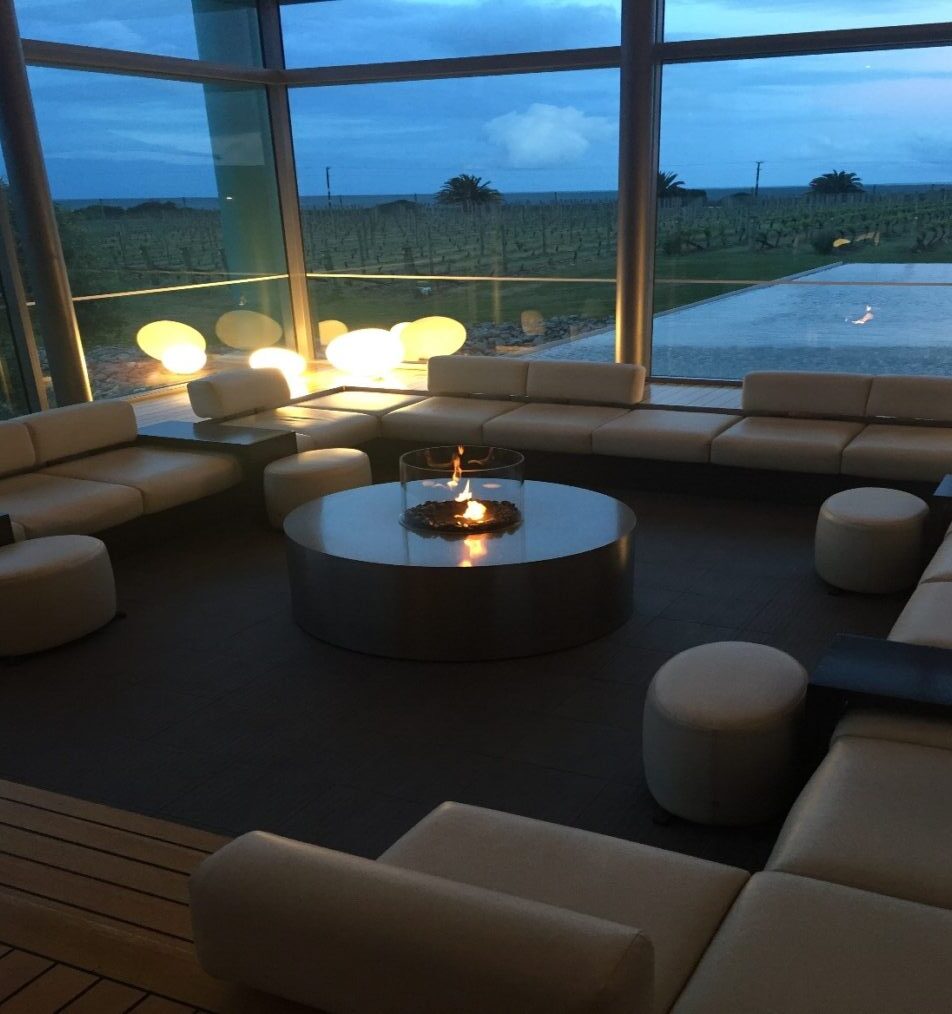
The Thermal Explorer Highway takes you from Hawkes Bay to Auckland through one of New Zealand’s most unique geological features. Volcanoes have shaped the land and continue to make their presence known sending steamy signals from the earth in the region around Lake Taupo. The area is a mecca for hikers (trampers in local parlance) and climbers while golfers have access to the Kinloch Club and there’s no better fishing than what the Tongariro River offers on the southern shores of the lake. A must for those seeking the best in food, lodging and total ambience is Huka Lodge. Here, idyllic charms of exclusive luxury and fine cuisine meet friendly hospitality and graceful guest services. This recipe has been the foundation upon which the resort’s reputation has been forged and secured. The resort perennially occupies the top spots as best resort in Australia, New Zealand and the world. Its reputation is well deserved and spending even a single night there will be rewarded with a life-long memory of what it feels like to be treated like royalty (after all they have hosted more than their fair share of royals over the years).
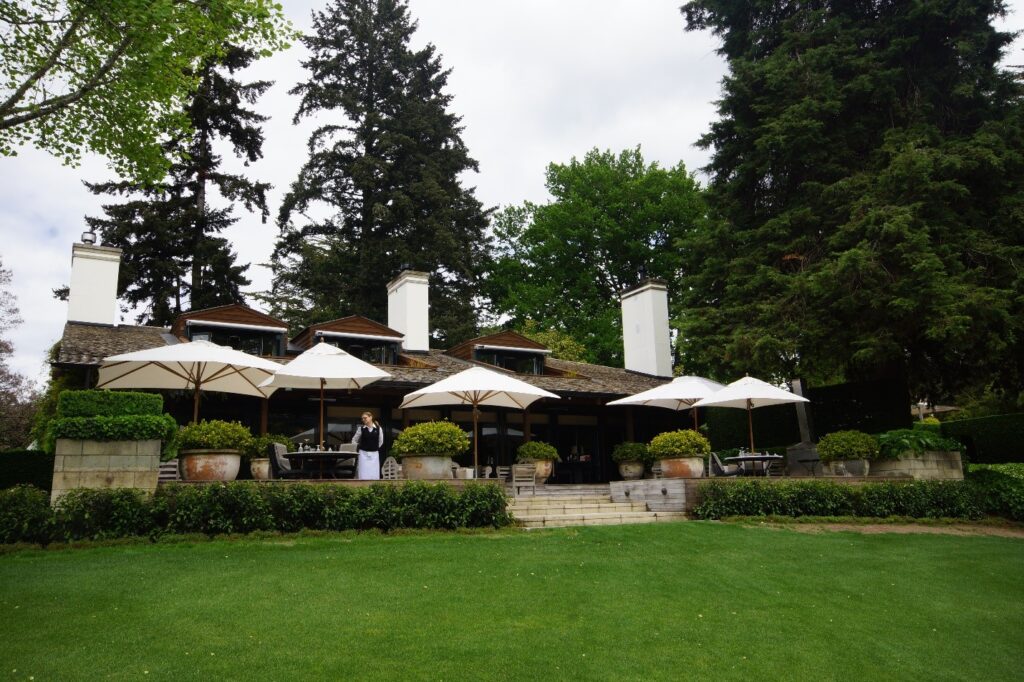
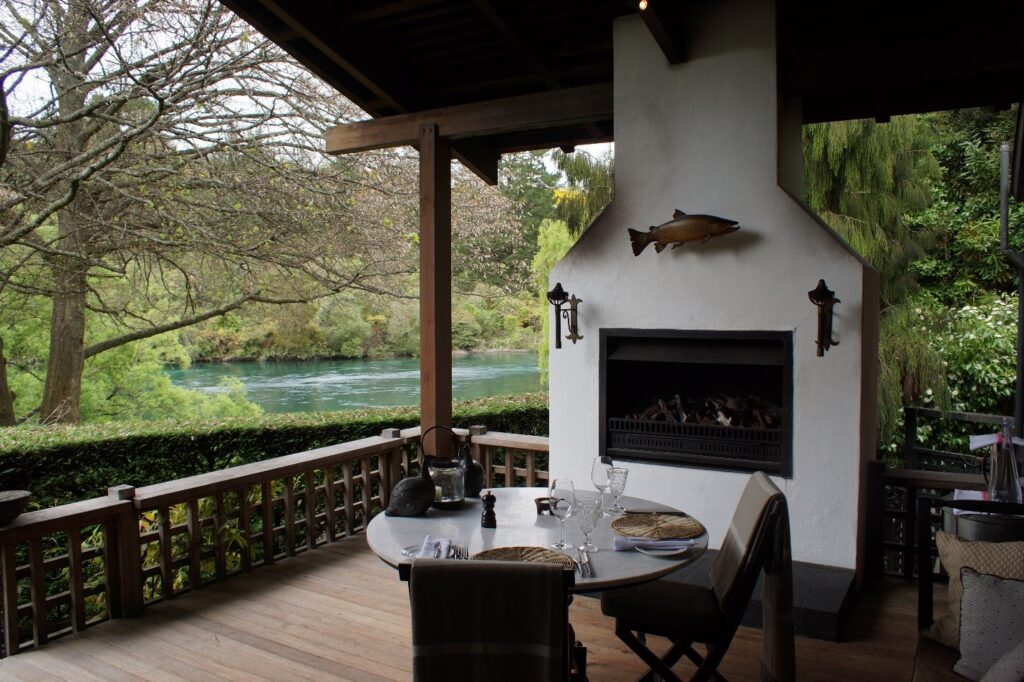
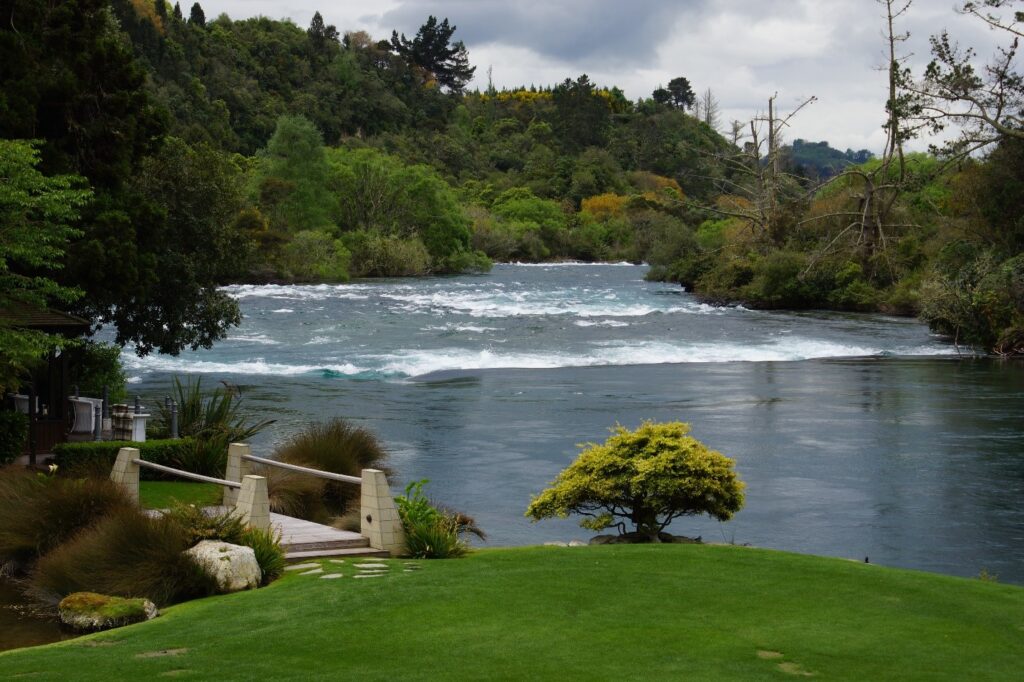
New Zealand is the perfect place to visit in the pursuit of pleasure through fine wine, gourmet dining and nature’s bountiful beauty. Spend at least three weeks exploring and the experience will still leave you wanting to return for more.